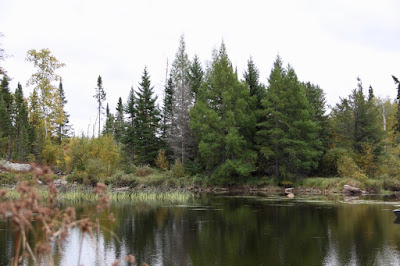Thanks more our general level of skepticism about Minnesotans' reliance on our current mine permitting-environmental protection systems, rather than any particular prescience, we posted, during July of this year, the following:Feds reopen forests near Boundary Waters to mining
Much of the rest of the world is moving toward sustainable production and procurement of commodity raw materials and products created therefrom. Minnesota had representatives from three of its entities at a recent sustainable procurement conference. Perhaps someone from the economic development and materials production side of the state should also be involved.Might International Mining Sustainability Standards help protect our Boundary Waters?
We've been tracking the potential for sustainable or responsible mining for several years now, in part because of our prior experience as a member of the board of directors when Minnesota was an independent chapter of the United States Green Building Council [USGBC], an international organization that brought us Leadership in Energy and Environmental Design [LEED] standards.
As a point of reference, below is the wording used in the most of current draft version of LEED v4:As we read it, the Framework for Responsible Mining was/is a predecessor to the standards being developed by the Initiative for Responsible Mining Assurance [IRMA], about which we've posted here a number of times.
Mined or quarried materials. For raw materials that are mined or quarried using practices covered in the Framework for Responsible Mining or USGBC-approved equivalent, obtain signed letters from the owners of the manufacturing companies and their raw materials suppliers, stating that they have reviewed and understood the Framework for Responsible Mining and publicly declared their commitment to responsible mining. Each raw material supplier must provide an independently audited checklist listing all of the Framework for Responsible Mining’s Leading Edge Issues, and identifying which Leading Edge measures they are currently taking.
 |
| should areas like this be protected from mining?
Photo by J. Harrington
|
There may be a very good reason, that we can't think of at the moment, that would preclude one or more of Minnesota's mine permitting agencies, that hasn't already issued which permit(s) it's responsible for, from including a requirement that the permit holder obtain and maintain an IRMA certification for the site(s) covered by the permit. This seems particularly relevant to the PolyMet project. If the certification lapsed or was withdrawn, the permit would immediately become invalid and operations would need to cease, and whatever financial assurance funds were available could then begin to be used to minimize problems associated with the cessation.
Minnesota seems to be lagging further and further behind the best practices in world-wide mining development and management. Relying on political solutions or strictly technical or financial options is not likely to provide adequate protection for our resources, including our taxpayers. We need a more holistic effort. Becoming a participant, and then a leader, in helping make mining sustainable, including confirming the extent to which the BWCA and Voyagers National Park could and should qualify as "no-go zones" for mining seems overdue. If participation in the development of IRMA standards is good enough for the United Steel Workers, perhaps such standards might even benefit the economy of the Iron Range.
Descartes' Loneliness
Toward evening, the natural light becomesintelligent and answers, without demur:“Be assured! You are not alone. . . .”But in fact, toward evening, I am notconvinced there is any other except myselfto whom existence necessarily pertains.I also interrogate myself to discoverwhether I myself possess any powerby which I can bring it about that Iwho now am shall exist another moment.Because I am mostly a thinking thingand because this precise question can onlybe from that thoughtful part of myself,if such a power did reside within meI should, I am sure, be conscious of it. . . .But I am conscious of no such power.And yet, if I myself cannot bethe cause of that assurance, surelyit is necessary to conclude thatI am not alone in the world. There issome other who is the cause of that idea.But if, at last, no such other can befound toward evening, do I really havesufficient assurance of the existenceof any other being at all? For,after a most careful search, I have beenunable to discover the ground of thatconviction—unless it be imagined a lonelyworkman on a dizzy scaffold unfoldsa sign at evening and puts his mark to it.
********************************************
Thanks for visiting. Come again when you can.
Please be kind to each other while you can.
No comments:
Post a Comment